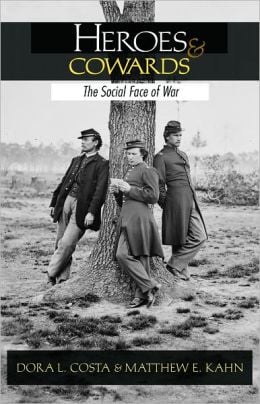“Diversity enriches education,” then-presidential-candidate Barack Obama commented in a Q&A session with The Chronicle of Higher Education. Students should be “exposed to diversity in all its forms,” and affirmative action is the vehicle to guarantee this goal. Contrary to the expectations of naive commentators who hoped we had entered a new epoch, the election of the Great Unifier has not silenced the champions of di-versity but amplified them. Emboldened by the intoxication of victory, Barack Obama’s followers now demand even more diversity.
Although diversity is today officially a part of the new holy trinity—along with egalitarianism and globalism—it may not be all it’s cracked up to be. Robert D. Put-nam, Harvard professor of public policy, published in 2007 “E Pluribus Unum: Diversity and Community in the Twenty-first Century,” in which he argues, based on a survey of 26,200 people in 40 American communities, that in the face of ethnic diversity people tend to “hunker down” and to “act like turtles,” to distrust those around them. The more racially diverse a community is, the greater the loss of trust. Consequently, Los Angeles, “the most diverse human habitation in human history,” has the lowest index of trust.
Influenced by the writings of Putnam and others, Dora L. Costa and Matthew E. Kahn, both professors of economics at UCLA, bring us Heroes and Cowards: The Social Face of War, a look at how diversity affects military performance. But rather than looking at contemporary trends as do other researchers, they investigate the behavior of Union soldiers during the Civil War.
Using records stored in the National Archives, the authors consider roughly 35,000 white men in 303 companies and 6,000 black soldiers in 51 companies to determine their rates of desertion and chances of survival in POW camps. Because these companies were not racially diverse—except for white officers commanding black soldiers—Costa and Kahn look at other factors contributing to diversity: ethnicity, birthplace, age, occupation, the voting tendencies of one’s home county, etc. The results mirror Putnam’s: The more diverse the company, the higher the rate of desertion; the more a POW is surrounded by people similar to him, the higher his chance of survival.
During the Civil War, roughly one out of ten Union soldiers deserted. The more homogeneous a soldier’s unit, the more social pressures commanded his loyalty. As Costa and Kahn note, “Within a heterogeneous unit, there is less social integration and informal communication.” The more diverse units lacked cohesion. Although certain types of white Union soldiers were more likely to desert than others (Irish- or British-born versus native- or German-born, draftee or substitute versus volunteer, illiterate versus literate, poor versus wealthy, city dweller versus farmer, anti-Lincoln versus pro-Lincoln), demographic diversity among units was the most important predictor of desertion. If all companies had been homogeneous, the data suggests, desertion rates would have been two percent rather than nine percent.
Heroes and Cowards is sprinkled with anecdotal evidence to support the claim that diversity undercut the cohesion of Union soldiers. “Life in the army was very different from life at home,” wrote one. “In one place we could choose our companions and those we wished to associate with, but in the army how different.” An Ohio commander petitioned to have mulattoes transferred from his regiment because they caused “great dissatisfaction among the white soldiers and [occasioned him] a great deal of trouble to keep order and quiet in the company.” Amid the horrors of war, it seems, people feel most secure when surrounded by those most like them.
Similar findings hold for the chances of survival in POW camps. Because prisoners had to compete for limited resources in the camps, they were more likely to survive if they were part of a social or kin network. Looking at data from Andersonville, Costa and Kahn find that after four months only 75 percent of soldiers with fewer than ten comrades were still alive, compared with 90 percent of those with ten or more comrades. Having studied various groups of captured men, they maintain that “if all groups had 15 extra men of the same ethnicity and company with them, the effects on survival probabilities would have been substantial.”
Although any substantive work that questions the dogma of diversity is welcome, Heroes and Cowards is not without its shortcomings. First, the authors possess an overwhelming pro-Union bias, at one point going so far as to compare Confederate prison guards to Nazis. Although Costa and Kahn admit that “few white soldiers claimed to fight primarily for the abolition of slavery,” they nevertheless superimpose a moral dimension on the war, one of “liberty against despotism.” Quoting Victor Davis Hanson (whose last name they misspell), the authors paint the war as a moral crusade, noting that democracies can “produce the most murderous armies from the most unlikely of men, and do so in the pursuit of something spiritual rather than the mere material.”
Furthermore, the authors seem undeterred by their own findings. Having just completed a book showing the pitfalls of diversity, they repeatedly claim that these exist only in the short term, not the long run. In other words, given another century and several trillion dollars more, diversity may still work out. Indeed, Costa and Kahn end their work with an homage to diversity, offering the blanket statement that people can better learn in diverse settings and lamenting that students in nondiverse dormitories are less likely to support affirmative-action policies. These lines recall Barack Obama’s answer in The Chronicle of Higher Education—and they ignore their own demonstration that the U.S. Army was at its strongest when it was the least diverse.
Heroes and Cowards confirms what common sense suggests. In the surreal age of political correctness, it is noteworthy that an empirical study must be done to prove what military leaders have known all along.
[Heroes and Cowards: The Social Face of War, by Dora L. Costa & Matthew E. Kahn (Princeton: Princeton University Press) 336 pp., $27.95]

Leave a Reply